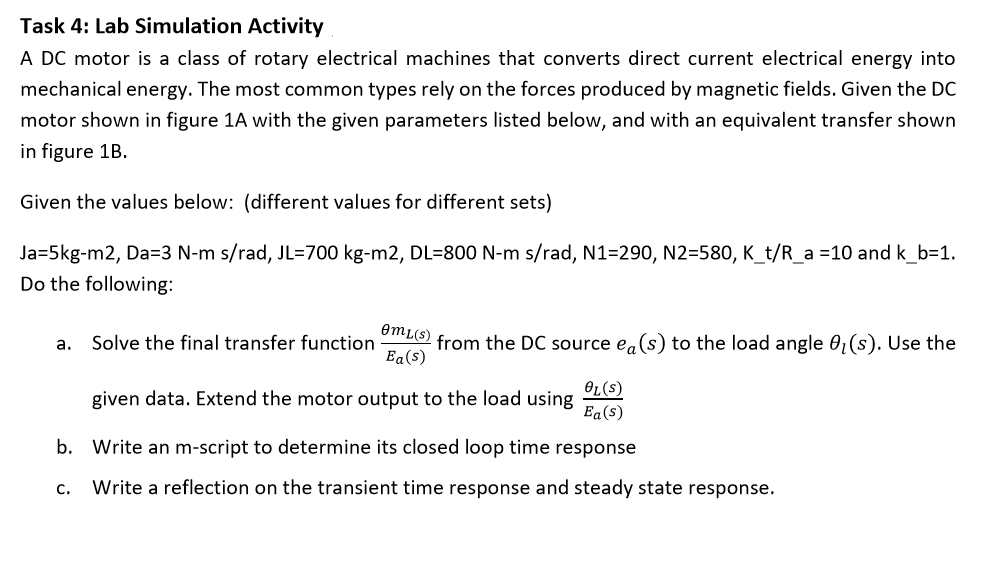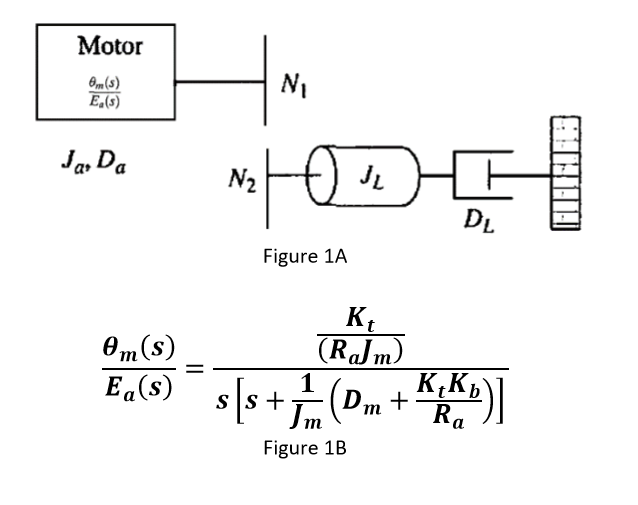DC motor is a class of rotary electrical machines that converts direct current elec echanical energy. The most common types rely on the forces produced by magnetic fic otor shown in figure 1A with the given parameters listed below, and with an equivale figure 1B. ven the values below: (different values for different sets) 200
DC motor is a class of rotary electrical machines that converts direct current elec echanical energy. The most common types rely on the forces produced by magnetic fic otor shown in figure 1A with the given parameters listed below, and with an equivale figure 1B. ven the values below: (different values for different sets) 200
Automotive Technology: A Systems Approach (MindTap Course List)
6th Edition
ISBN:9781133612315
Author:Jack Erjavec, Rob Thompson
Publisher:Jack Erjavec, Rob Thompson
Chapter22: Basics Of Electronics And Computer Systems
Section: Chapter Questions
Problem 4RQ: Means that data concerning the effects of the computers commands are fed back to the computer as an...
Related questions
Question
Please help me, please, I want to solve all the questions, without quoting and without plagiarism, I want the solution in MS Word, I do not want handwriting.

Transcribed Image Text:Task 4: Lab Simulation Activity
A DC motor is a class of rotary electrical machines that converts direct current electrical energy into
mechanical energy. The most common types rely on the forces produced by magnetic fields. Given the DC
motor shown in figure 1A with the given parameters listed below, and with an equivalent transfer shown
in figure 1B.
Given the values below: (different values for different sets)
Ja=5kg-m2, Da=3 N-m s/rad, JL=700 kg-m2, DL=800 N-m s/rad, N1=290, N2=580, K_t/R_a =10 and k_b=1.
Do the following:
OmL(s)
from the DC source ea(s) to the load angle 0,(s). Use the
Ea(s)
a.
Solve the final transfer function
OL(s)
given data. Extend the motor output to the load using
Ea(s)
b. Write an m-script to determine its closed loop time response
С.
Write a reflection on the transient time response and steady state response.

Transcribed Image Text:Motor
N1
E,(s)
Ja, Da
N2
DL
Figure 1A
KL
(RJm)
Om(s)
Ea(s)
E, s[s+(Dm+)
S|s +
Ra
Figure 1B
Expert Solution
This question has been solved!
Explore an expertly crafted, step-by-step solution for a thorough understanding of key concepts.
Step by step
Solved in 3 steps

Knowledge Booster
Learn more about
Need a deep-dive on the concept behind this application? Look no further. Learn more about this topic, mechanical-engineering and related others by exploring similar questions and additional content below.Recommended textbooks for you

Automotive Technology: A Systems Approach (MindTa…
Mechanical Engineering
ISBN:
9781133612315
Author:
Jack Erjavec, Rob Thompson
Publisher:
Cengage Learning

Automotive Technology: A Systems Approach (MindTa…
Mechanical Engineering
ISBN:
9781133612315
Author:
Jack Erjavec, Rob Thompson
Publisher:
Cengage Learning